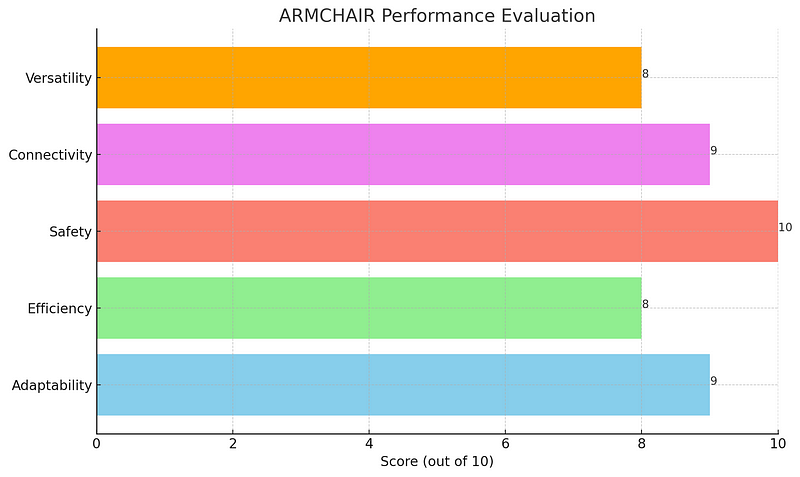The Future of Human-Robot Collaboration: Exploring ARMCHAIR Technology
Written on
Chapter 1: Understanding ARMCHAIR Technology
Imagine a future where robots are so attuned to human actions that they become essential allies in our quests to explore the unknown. This vision is being realized through a revolutionary framework known as ARMCHAIR. Developed by a talented team, this innovative approach aims to harmonize robotic autonomy with human intuition, making exploration missions safer, more effective, and truly collaborative.
Section 1.1: What is ARMCHAIR?
ARMCHAIR, which stands for Adaptive Robot Motion for Collaboration with Humans using Adversarial Inverse Reinforcement Learning, describes a method by which robots learn from human behaviors to make decisions that complement our actions. By employing advanced algorithms, these robots can predict human behavior, allowing them to assist without hindering, resulting in smoother and more intuitive teamwork.
Subsection 1.1.1: The Importance of Collaboration
In various exploration scenarios, whether it’s delving into the remnants of ancient civilizations or aiding in search-and-rescue operations after disasters, the synergy between humans and robots can be transformative. ARMCHAIR enables robots to not simply follow instructions but to actively comprehend and anticipate human needs, enhancing the success rate of missions.
Section 1.2: Enhancing Exploration with ARMCHAIR
By merging adversarial inverse reinforcement learning with model predictive control, ARMCHAIR empowers robots to compute optimal pathways and make real-time decisions. This capability allows robots to adapt quickly to changes in human behavior or unforeseen obstacles, ensuring the human-robot team can navigate even the most complex environments efficiently and safely.
Chapter 2: Technical Innovations Behind ARMCHAIR
At the core of ARMCHAIR lies a sophisticated integration of machine learning and control engineering. This combination equips robots not only to forecast human actions but also to learn from past interactions, continuously enhancing their support capabilities. The more time humans and robots spend working together, the more adept the robots become at predicting and fulfilling human needs.

Performance Evaluation of ARMCHAIR — This chart illustrates ARMCHAIR’s outstanding performance across various metrics, highlighting its potential to revolutionize human-robot cooperation.
Section 2.1: Key Performance Indicators
ARMCHAIR showcases remarkable adaptability to human behavior. Its learning algorithms refine its predictions and actions based on prior interactions, essentially allowing it to grow smarter over time.
Subsection 2.1.1: Efficiency and Safety
In simulations, ARMCHAIR has demonstrated flawless efficiency, making no unnecessary visits to targets. Additionally, it significantly lowers collision risks, averaging only 0.001 collisions across 1000 simulated missions, ensuring safety for both robots and humans.
Section 2.2: Network Connectivity and Versatility
ARMCHAIR maintains impeccable network connectivity throughout missions, ensuring seamless communication and coordination between human and robotic team members. The underlying technology has applications far beyond exploration, including disaster recovery and manufacturing efficiency, showcasing its versatility.
Chapter 3: Future Implications of ARMCHAIR Technology
The introduction of ARMCHAIR marks not just an advancement in robotics but a significant leap toward a future where humans and robots can work together seamlessly. By learning from and adapting to human behaviors, ARMCHAIR ensures that as we venture into uncharted territories, we do so with robotic partners that understand our needs and work alongside us to achieve our objectives.
The first video titled "The Robotic Moment: Who Do We Become When We Talk to Machines?" delves into the evolving relationship between humans and robots, exploring how communication shapes our understanding and collaboration with machines.
The second video features keynote speaker Chelsea Finn, Ph.D., who discusses the future of robotics and the collaborative possibilities that lie ahead.
Conclusion
As we stand on the threshold of this new exploratory era, one thing is clear: the future of human-robot collaboration is bright, and it begins with ARMCHAIR.